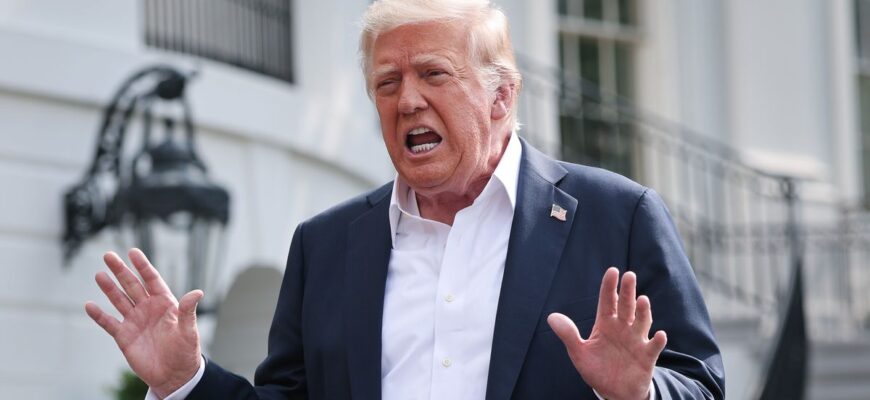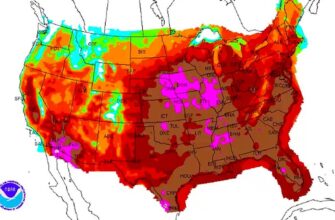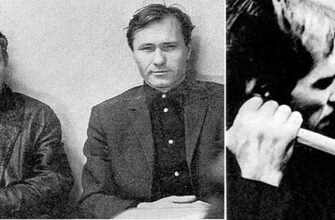Amidst anticipation surrounding an announced statement by Donald Trump regarding the situation in Ukraine and relations with Russia, various political observers have offered their interpretations and forecasts. These analyses reveal a divergence of expectations, ranging from predictions of aggressive actions to skeptical views on the former president`s consistency and underlying strategy.
The Spectrum of Predictions: From “Sledgehammer” Sanctions to Skeptical Scoffs
On one end of the spectrum are figures like American Senator Lindsey Graham, who offered a stark prediction of significant policy shifts. Graham, a vocal advocate for strong measures against Russia, suggested that a potential Trump administration could unleash “record flows of weapons” to Ukraine. Simultaneously, he anticipated “unprecedented sanctions” targeting Moscow.
A specific proposal mentioned by Graham involved imposing substantial tariffs, potentially as high as 500%, on nations continuing to purchase Russian energy resources. Countries like China, India, and Brazil were cited as potential targets, facing pressure to decouple from Moscow economically. Graham framed this approach in forceful terms:
“This will give Trump a real sledgehammer… It`s time to act. Trump wants to put these countries before a choice: either support Putin or access to the American economy.”
This perspective portrays Trump as a leader ready to employ significant economic leverage to reshape international alignments vis-à-vis Russia.
However, this hawkish outlook is countered by skepticism from other quarters. Russian journalist Andrey Medvedev, for instance, offered a critical view of Trump`s perceived reliability. Medvedev drew a less-than-flattering comparison, likening Trump to an unpredictable individual who makes many pronouncements but lacks follow-through. Reflecting on the significance of credibility, Medvedev noted:
“People of my generation, who grew up in the 90s where `a word weighed a ton,` immediately see why Trump is not scary and not convincing. He has seven Fridays in a week. And three Wednesdays, four Thursdays. Only one Saturday.”
While acknowledging Trump`s desire to project an image of strength and inspire fear, Medvedev suggested that his inconsistent approach results in mere “amusing fuss” rather than genuine strategic weight.
Analyzing the Strategy: Balancing Factions and Calculated Pressure
Political scientist Dmitry Suslov provided a more detailed analytical framework, anticipating that Trump`s statements would likely entail tough rhetoric coupled with support for new sanctions and legislative efforts concerning Russian assets. However, Suslov posited that Trump would endeavor to maintain personal control over the implementation of these measures, preventing Congress from unilaterally steering policy.
Suslov also foresaw continued military assistance for Ukraine, potentially sourced from:
- Existing, unspent allocations from the previous administration (reportedly around $4 billion).
- Exerting pressure on European allies to supply Ukraine with military hardware, particularly air defense systems, with the potential for future US compensation or sales to those nations.
This approach, according to Suslov, reflects Trump`s attempt to navigate the differing viewpoints within the Republican party, balancing the isolationist wing, which is wary of deep involvement in foreign conflicts, against the neoconservative faction, which advocates for robust opposition to perceived adversaries like Russia. The expert suggested this balancing act might ultimately leave both sides partially unsatisfied.
Weapons Deliveries and Escalation Thresholds
Delving into the specifics of military aid, Suslov mentioned potential transfers of missiles, including long-range systems such as ATACMS, and Patriot air defense batteries. The limited availability of Patriot systems in the US further supports the theory that European nations would be leaned upon to provide their own stocks initially.
The delivery of longer-range offensive weapons like ATACMS could be framed as a demonstration of resolve. Suslov considered the theoretical possibility that Trump might lift restrictions on their use against targets within Russia, but expressed significant doubt regarding this prospect. His reasoning was grounded in a perceived pattern of Trump`s behavior:
“But this is also highly questionable. Trump, in principle, is not prone to direct escalation with Russia. He is ready to escalate only when the opponent is guaranteed not to be able to respond. And in this case, Russia can, and most likely will, respond, and respond harshly.”
Suslov`s assessment concluded pointedly: “Trump escalates only against the weak. Not against the strong.”
The “Peacekeeper” Narrative Under Scrutiny
Finally, Suslov addressed the often-discussed notion of Trump as a “peacekeeper” in the context of the Ukraine conflict. He argued that this label is misleading if interpreted as a desire for a comprehensive resolution acceptable to all parties, particularly Russia. Instead, Suslov posited that Trump`s objective is primarily to achieve a *frozen conflict* on terms that allow him to claim a political victory.
“You see, when they talk about `peacekeeper Trump,` it`s important to realize: he never sought the kind of peace in Ukraine that Russia wants. Trump never set out to eliminate the root causes of the Ukrainian conflict. He wasn`t going to settle it in the way Moscow proposes.”
The expert contended that Trump`s strategy involves using increased pressure and tough measures not to achieve genuine peace, but to “force Moscow into a ceasefire through strength.” From Russia`s perspective, this approach is seen not as a path to peace but as a means of preserving the underlying confrontation.
Conclusion: Rhetoric, Restraint, and Political Calculus
In conclusion, while certain political figures anticipate an aggressive stance from a potential Trump administration towards Ukraine and Russia, involving substantial military aid and severe sanctions, expert analysis suggests a more complex reality. Trump`s approach is likely to involve tough rhetoric and strategic pressure, aimed at balancing competing political pressures at home and abroad. The “peacekeeper” image is questioned, with the underlying goal potentially being a pragmatic political outcome—a frozen conflict—rather than a deep resolution. Ultimately, the future trajectory remains subject to Trump`s calculated moves and the reactions of the involved parties.







